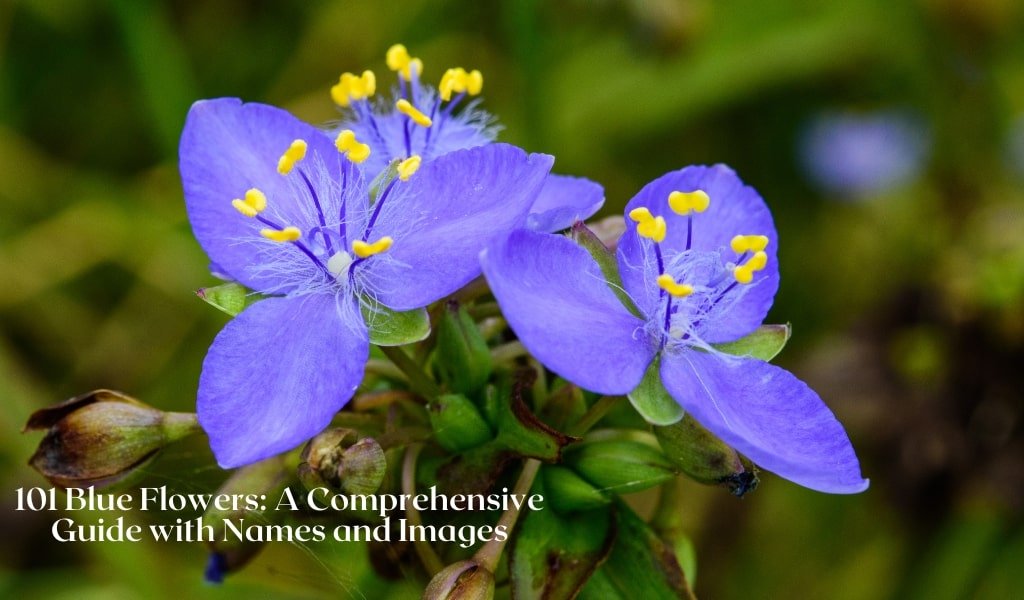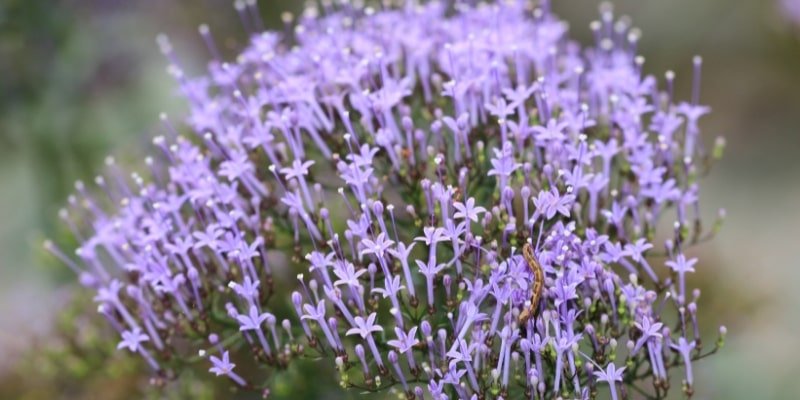Using a wide range of colours while planting your garden will help produce a stunning botanical image. But some flower colours are more uncommon than others. Blue is one such colour of flower that you may not yet have in your garden. Blue is a colour associated with peace, tranquilly, and serenity. Regrettably, blue is a colour that is uncommon in the natural world, making blue flowers more difficult to locate.
You may discover all there is to know about the 101 most well-liked blue flowers in this extensive list, along with some basic maintenance advice. You’ll also discover some interesting details regarding their outstanding qualities! Now let’s get started!
1.Blue Viper’s Bugloss (Echium vulgare)
 Botanical Name: Echium vulgare
Botanical Name: Echium vulgare
Plant Type: Biennial/Perennial
Hardiness Zones: 3-8 (USDA)
Sun Exposure: Full Sun
Bright blue, bee-friendly flower spires are produced by Blue Viper’s Bugloss. This wildflower gives gardens a hint of the wild.
2. Blue Violets (Viola sororia)
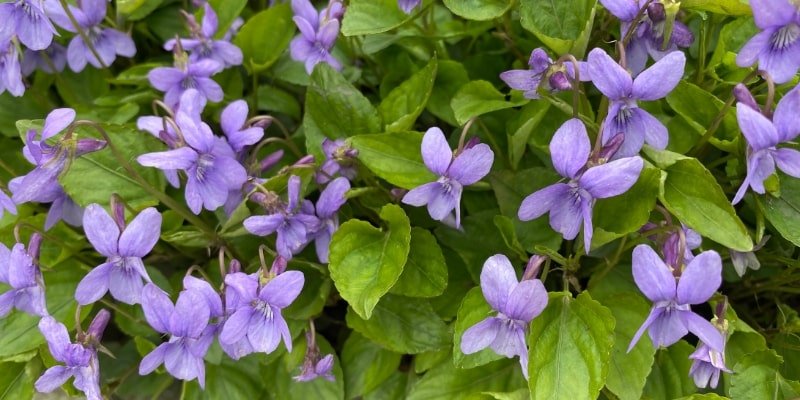
Botanical Name: Viola sororia
Plant Type: Perennial
Hardiness Zones: 3-8 (USDA)
Sun Exposure: Partial Shade to Full Sun
Blue violets have violet-to-blue flowers and leaves fashioned like hearts. They are a pleasant addition to shaded locations, and they naturally integrate well.
3. Blue Monkshood (Aconitum carmichaelii)
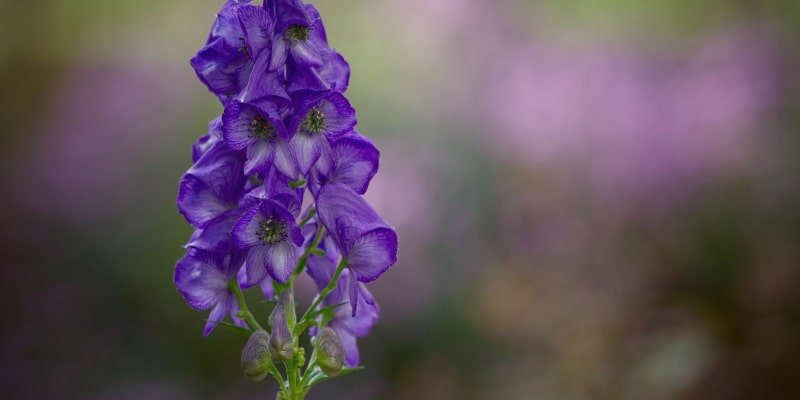
Botanical Name: Aconitum carmichaelii
Plant Type: Perennial
Hardiness Zones: 3-7 (USDA)
Sun Exposure: Full Sun to Partial Shade
The foliage of the Blue Monkshood is highly lobed and has spikes of hooded blue blooms. You should handle this deadly plant carefully.
4. Blue Spiderwort (Tradescantia ohiensis)

Botanical Name: Tradescantia ohiensis
Plant Type: Perennial
Hardiness Zones: 5-9 (USDA)
Sun Exposure: Full Sun to Partial Shade
Clusters of blue-to-violet flowers are carried by blue spiderwort atop strappy leaves. It is a hardy shrub that looks great in rural landscapes and cottage gardens.
5. Blue Honeywort (Cerinthe major‘Purpurascens’)

Botanical Name: Cerinthe major ‘Purpurascens’
Plant Type: Annual
Hardiness Zones: 3-11 (USDA)
Sun Exposure: Full Sun to Partial Shade
The blue-violet tubular flowers of blue honeywort are grouped among blue-green foliage. This unusual, self-seeding shrub is simple to maintain and adds an exotic touch to cottage gardens.
6. Blue Brodiaea (Brodiaea pulchella)

Botanical Name: Brodiaea pulchella
Plant Type: Perennial
Hardiness Zones: 7-10 (USDA)
Sun Exposure: Full Sun
Star-shaped, blue-violet flowers are borne in clusters by Blue Brodiaea. This native Californian bulbous plant is a great option for rock gardens since it does well in soil that drains well.
7. Blue Dawn Flower (Stictocardia beraviensis)

Botanical Name: Stictocardia beraviensis
Hardiness Zones: 10-11 (USDA)
Plant Type: Perennial Vine
Sun Exposure: Full Sun
The Blue Dawn Flower has huge funnel-shaped flowers that are sky blue in colour. It’s a warm-weather vine that grows quickly, giving pergolas and fences a touch of the tropics.
8. Anise Sage (Salvia guaranitica)

Botanical Name: Salvia guaranitica
Plant Type: Perennial
Hardiness Zones: 7-10 (USDA)
Sun Exposure: Full Sun
Blue sage, sometimes called anise sage, has fragrant foliage and tall spikes of rich blue blooms. It’s a favourite in wildlife gardens since it attracts butterflies and hummingbirds.
9. Blue Lobelia (Lobelia erinus)

Botanical Name: Lobelia erinus
Hardiness Zones: 2-11 (USDA)
Plant Type: Annual
Sun Exposure: Full Sun to Partial Shade
The rich blue, tubular flowers of Blue Lobelia are abundantly displayed in groups. It works great for hanging pots and baskets to create a waterfall effect of blue flowers.
10. Lily of the Nile (Agapanthus africanus)

Botanical Name: Agapanthus africanus
Plant Type: Perennial
Hardiness Zones: 6-11 (USDA)
Sun Exposure: Full Sun to Partial Shade
The trumpet-shaped blue flowers of the Lily of the Nile are arranged in clusters on tall stems. It is a low-maintenance plant that looks great in containers and borders. It gives gardens a hint of exotic appeal.
11. Love-in-a-Mist (Nigella damascena)

Botanical Name: Nigella damascena
Plant Type: Annual
Hardiness Zones: 2-11 (USDA)
Sun Exposure: Full Sun to Partial Shade
Love-in-a- Mist, or Nigella damascena, is a plant with delicately cut leaves and star-shaped, sky-blue blooms encircled by a mist of delicate foliage. They easily self-sow, giving gardens a lovely, organic appearance.
12. Blue Dahlia (Dahlia spp)

Botanical Name: Dahlia spp.
Plant Type: Tuberous Perennial
Hardiness Zones: 7-11 (USDA)
Sun Exposure: Full Sun
Blue dahlias lend elegance to flower gardens and bouquets since they come in a variety of hues, from powder blue to deep indigo. For all types to maintain their attractiveness, they require support to keep them from toppling over.
13. Blue Plumbago (Plumbago auriculata)
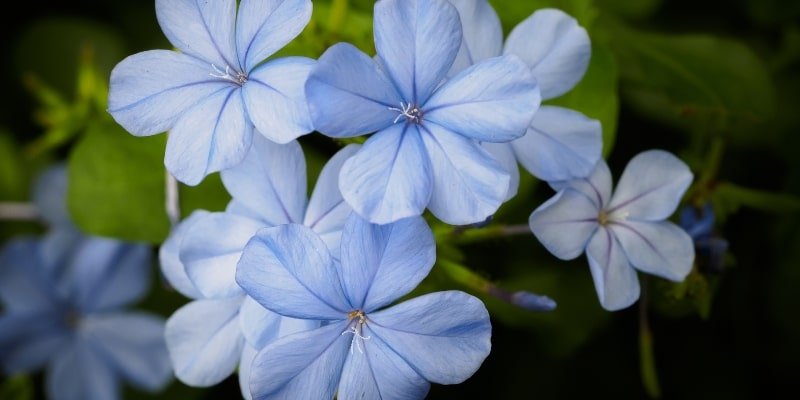
Botanical Name: Plumbago auriculata
Plant Type: Shrub
Hardiness Zones: 9-11 (USDA)
Sun Exposure: Full Sun to Partial Shade
Sky-blue flower clusters adorn the sprawling shrub known as blue plumbago. It draws butterflies and can withstand droughts. To keep form and promote bushier growth, prune.
14. Blue Mink (Ageratum houstonianum)

Botanical Name: Ageratum houstonianum
Plant Type: Annual
Hardiness Zones: 2-11 (USDA)
Sun Exposure: Full Sun to Partial Shade
Fluffy clusters of tiny, powder-blue flowers are shown by Blue Mink, also called Floss Flower. It is great for borders, containers, and mass plantings, and it blooms profusely.
15. Blue Daisy Bush (Cineraria maritima)
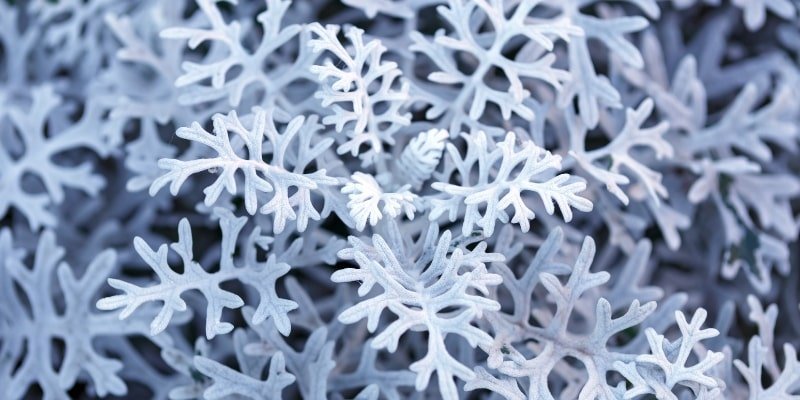
Botanical Name: Cineraria maritima
Plant Type: Perennial
Hardiness Zones: 9-11 (USDA)
Sun Exposure: Full Sun to Partial Shade
In blue Small blue flowers like daisies adorn the silvery-blue foliage of Daisy Bush. For borders and rock gardens, it works well. Trim to keep a compact form.
16. Blue Devil (Eryngium planum)

Botanical Name: Eryngium planum
Plant Type: Perennial
Hardiness Zones: 3-9 (USDA)
Sun Exposure: Full Sun
Thistle-like foliage and spiky blue flowers characterize Blue Devil, often called Sea Holly. This shrub, which can withstand drought, gives gardens and floral arrangements more texture and intrigue.
17. Blue Flax (Linum perenne)
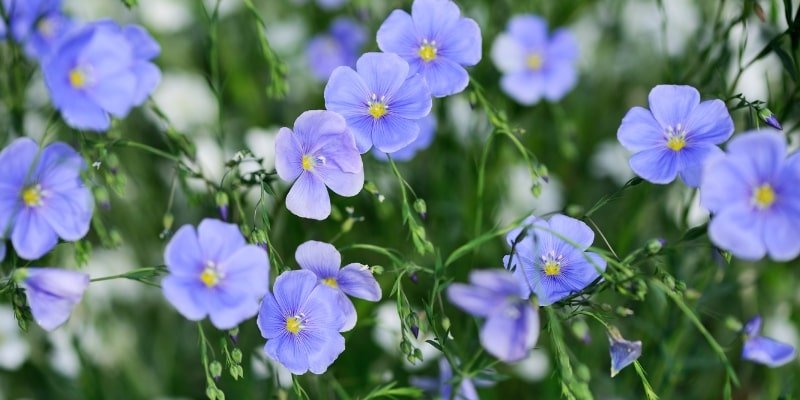
Botanical Name: Linum perenne
Plant Type: Perennial
Hardiness Zones: 5-9 (USDA)
Sun Exposure: Full Sun
Sky-blue, delicate flowers are carried on slender stems by Blue Flax. It does well on rocky or sandy soil and can withstand droughts. Regularly remove deadheads to promote ongoing blooming.
18. Himalayan Blue Poppy (Meconopsis betonicifolia)
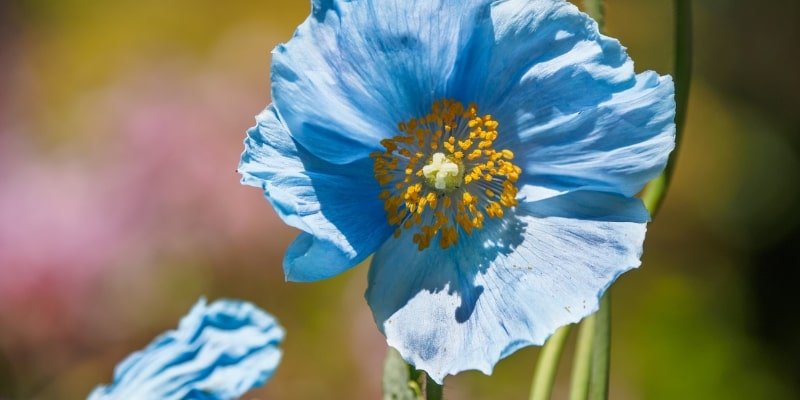
Botanical Name: Meconopsis betonicifolia
Plant Type: Perennial
Hardiness Zones: 7-9 (USDA)
Sun Exposure: Partial Shade
The tall stems of Himalayan blue poppies bear enormous, sky-blue blooms. They need well-drained soil and chilly, damp environments. For optimum effects, shield from the hot afternoon sun.
19. Blue Lobelia (Lobelia siphilitica)

Botanical Name: Lobelia siphilitica
Plant Type: Perennial
Hardiness Zones: 4-9 (USDA)
Sun Exposure: Full Sun to Partial Shade
On upright stems, Blue Lobelia displays spires of brilliant blue blooms. Rain gardens are ideal for this plant since it grows well in damp soil. Extended blooming is ensured by consistent watering.
20. Delphinium (Delphinium)

Botanical Name: Delphinium
Plant Type: Perennial
Hardiness Zones: 3-7 (USDA)
Sun Exposure: Full Sun
Tall, graceful plants, delphiniums, have spikes of bright blue blooms packed closely together. They need well-drained soil and staking for support. Frequent removal of deadheads extends blooming.
21. Bluebell (Hyacinthoides non-scripta)

Botanical Name: Hyacinthoides non-scripta
Plant Type: Bulbous Perennial
Hardiness Zones: 3-8 (USDA)
Sun Exposure: Partial Shade to Full Shade
The little, bell-shaped blooms, known as bluebells, grow in drooping clusters. They blend in nicely and have a preference for wooded areas. Bluebells looks great in gardens with shadows.
22. Blue Hydrangea (Hydrangea macrophylla)

Botanical Name: Hydrangea macrophylla
Plant Type: Deciduous Shrub
Hardiness Zones: 5-9 (USDA)
Sun Exposure: Partial Shade
The expansive, fluffy clusters of blue flowers that adorn blue hydrangeas are their hallmark. They grow well in somewhat shaded areas and prefer acidic soil. To promote fresh growth, prune them once they have flowered.
23. Blue Squill (Scilla siberica)
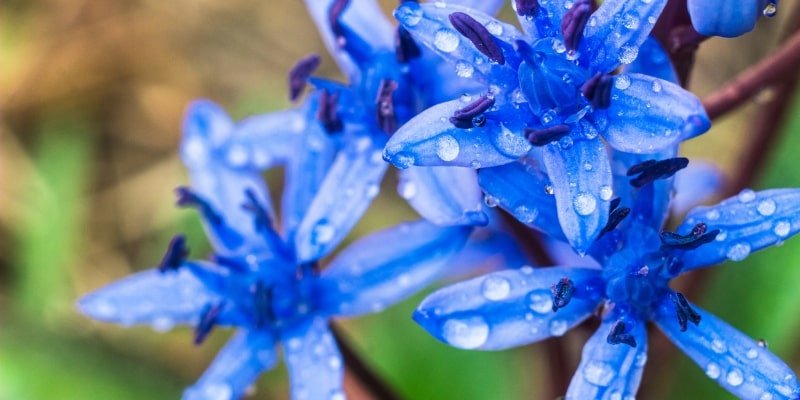
Botanical Name: Scilla siberica
Plant Type: Perennial Bulb
Hardiness Zones: 2-8 (USDA)
Sun Exposure: Full Sun to Partial Shade
Early springtime brings bell-shaped blue flowers that nod. This is the blue squill. It quickly becomes naturalized and covers gardens like a blue carpet.
24. Blue Curls (Phacelia congesta)
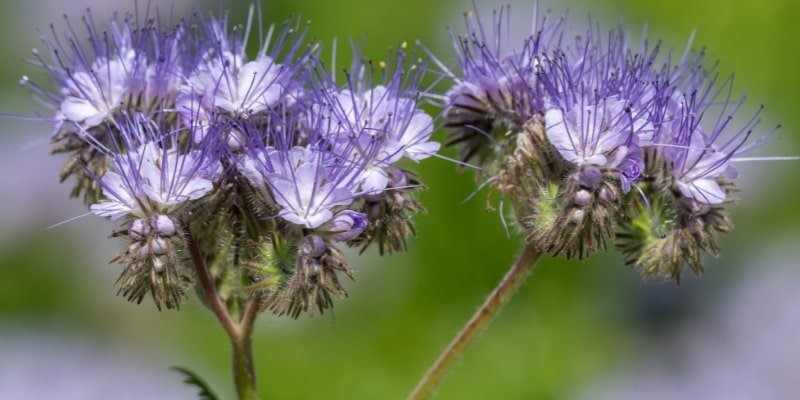
Botanical Name: Phacelia congesta
Plant Type: Annual
Hardiness Zones: 5-10 (USDA)
Sun Exposure: Full Sun
Blue to purple blooms are arranged in coiled bunches by Blue Curls. They greatly improve pollination in gardens by drawing in bees and butterflies.
25. Blue Japanese Iris (Iris ensata)

Botanical Name: Iris ensata
Plant Type: Perennial
Hardiness Zones: 4-9 (USDA)
Sun Exposure: Full Sun to Partial Shade
The huge, elaborate blue blossoms of the blue Japanese iris include white and yellow patterns. This plant, which thrives in wet environments, is perfect for pond borders.
26. Blue Dampiera (Dampiera stricta)

Botanical Name: Dampiera stricta
Plant Type: Perennial
Hardiness Zones: 9-11 (USDA)
Sun Exposure: Full Sun
The Blue Dampiera flower has yellow centres and brilliant blue petals. It is a low-growing, spreading shrub that does well in sandy soils and coastal regions.
27. Blue Gilia (Gilia aggregata)
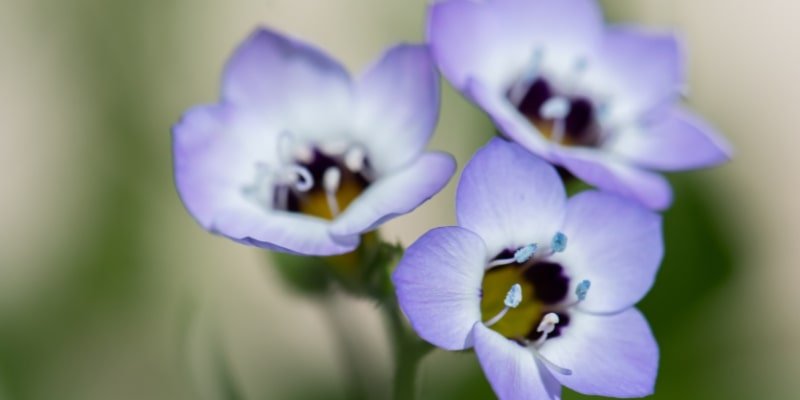
Botanical Name: Gilia aggregata
Plant Type: Annual
Hardiness Zones: 3-10 (USDA)
Sun Exposure: Full Sun
Skyrocket, or blue gilia, is a plant that grows long stems topped with clusters of sky-blue flowers. This native wildflower of western North America gives meadows and xeriscapes a touch of the natural world.
28. Siberian Bugloss (Brunnera macrophylla)
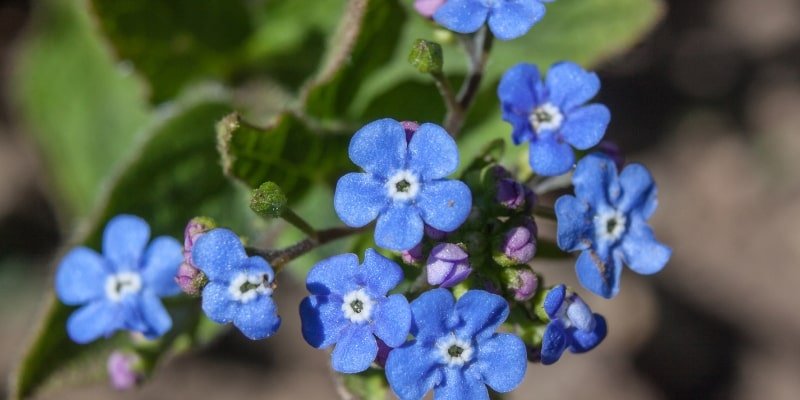
Botanical Name: Brunnera macrophylla
Plant Type: Perennial
Hardiness Zones: 3-8 (USDA)
Sun Exposure: Full Shade to Partial Shade
The heart-shaped leaves and tiny, vivid blue blooms that resemble forget-me-nots are characteristics of Brunnera macrophylla. This shade-loving perennial gives forest gardens and shady borders style and colour.
29. Grape Hyacinth (Muscari)
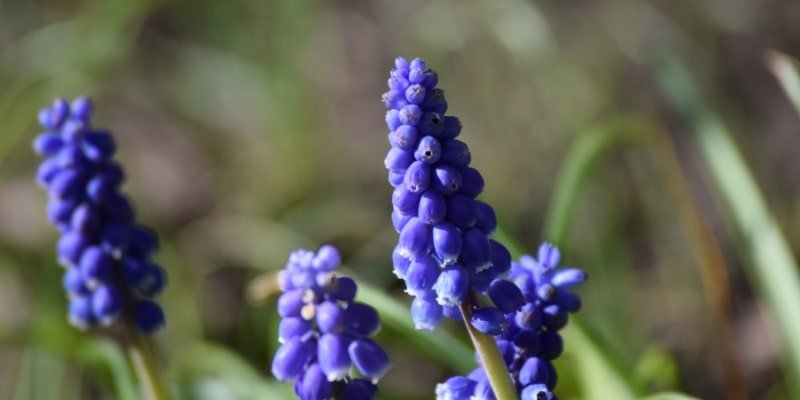
Botanical Name: Muscari spp.
Plant Type: Bulbous Perennial
Hardiness Zones: 3-9 (USDA)
Sun Exposure: Full Sun to Partial Shade
The tiny, cobalt-blue flowers on the compact spikes of grape hyacinths resemble miniature grapes. They are beautiful under deciduous trees and as rock gardens, and they naturalize easily.
30. Bachelor’s Button (Centaurea cyanus)

Botanical Name: Centaurea cyanus
Plant Type: Annual
Hardiness Zones: 2-11 (USDA)
Sun Exposure: Full Sun
Cornflowers, often known as bachelor’s buttons, have a contrasting yellow centre and vivid blue petals. It’s a popular cut flower that attracts butterflies and bees. It is a good fit for wildflower gardens because it can grow well in poor soil.
31. Blue Hosta (Hosta spp)

Botanical Name: Hosta spp
Plant Type: Perennial
Hardiness Zones: 3-9 (USDA)
Sun Exposure: Full Shade to Partial Shade
The blue-hued leaves of the Blue Hosta are fashioned like hearts. Though mostly planted for their foliage, several types also yield elegant lavender-blue flowers on tall spikes that enhance the beauty of shadow gardens.
32. Blue Throatwort (Collinsia heterophylla)

Botanical Name: Collinsia heterophylla
Hardiness Zones: 3-9 (USDA)
Plant Type: Annual
Sun Exposure: Full Sun to Partial Shade
The blue throatwort has white throats and clusters of blue flowers. This lovely wildflower is a delightful addition to meadows and cottage gardens because it self-sows rapidly.
33. Blue Cardinal Climber (Ipomoea horsfalliae)
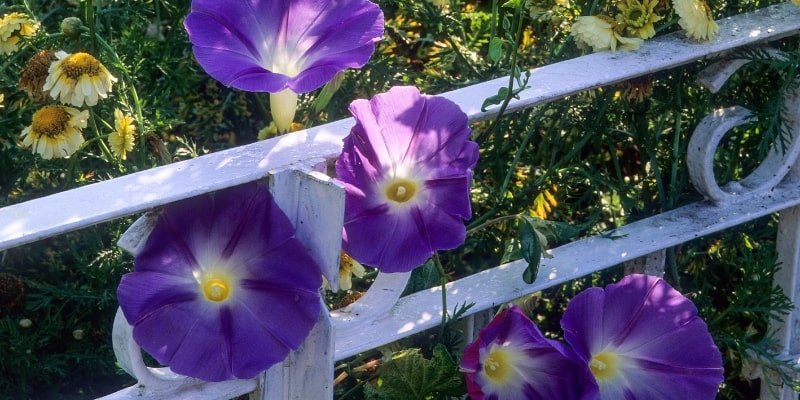
Botanical Name: Ipomoea horsfalliae
Plant Type: Perennial Vine
Hardiness Zones: 10-11 (USDA)
Sun Exposure: Full Sun to Partial Shade
The tubular, blue-violet flowers of the Blue Cardinal Climber, also known as Prince Kuhio Vine, are accompanied by glossy, dark-green leaves. This robust vine gives fences, arbours, and trellises a touch of the tropics.
34. Blue Trumpet Vine (Thunbergia battiscombei)
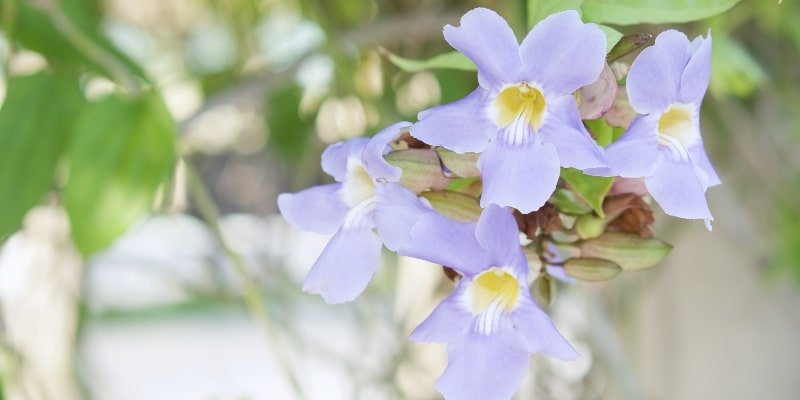
Botanical Name: Thunbergia battiscombei
Plant Type: Perennial Vine
Hardiness Zones: 10-11 (USDA)
Sun Exposure: Full Sun
The Blue Trumpet Vine has rich green foliage and trumpet-shaped, deep blue blooms. It’s a quick-growing vine that draws butterflies and hummingbirds, giving gardens a vibrant focal point.
35. Blue-eyed Mary (Collinsia verna)
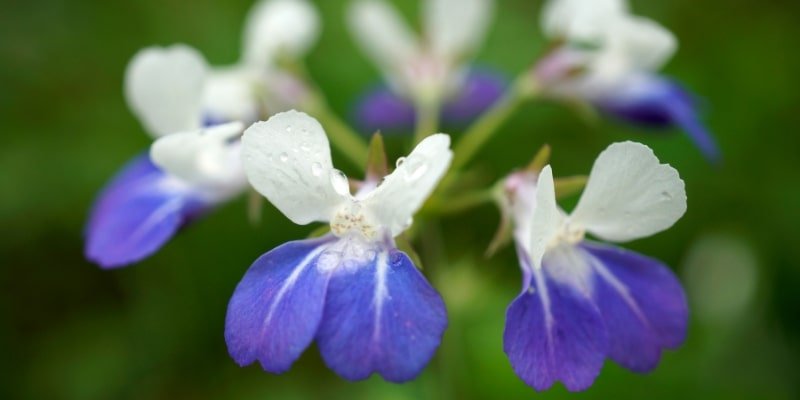
Botanical Name: Collinsia Verna
Plant Type: Annual
Hardiness Zones: 5-9 (USDA)
Sun Exposure: Partial Shade to Full Sun
Blue eyes Mary bears blue tubular blooms with white centres in groups. This wood plant naturally blends in and, in the springtime, creates a blue carpet.
36. Blue Camass (Camassia quamash)

Botanical Name: Camassia quamash
Plant Type: Perennial
Hardiness Zones: 4-9 (USDA)
Sun Exposure: Full Sun to Partial Shade
Blue flowers shaped like stars are borne atop tall spikes of blue camass. Natural Americans used this natural wildflower as a major source of food.
37. Blue Pincushion Flower (Scabiosa columbaria)
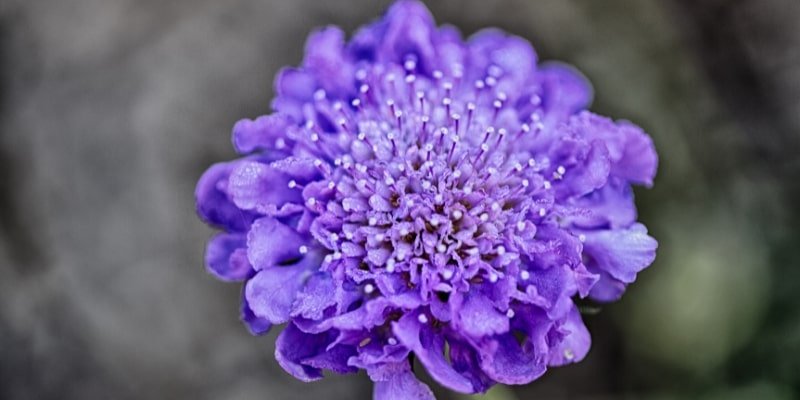
Botanical Name: Scabiosa columbaria
Plant Type: Perennial
Hardiness Zones: 3-8 (USDA)
Sun Exposure: Full Sun
The Blue Pincushion Flower is a long-stemmed flower with ruffled blue blossoms. It draws bees and butterflies and works great for trimming plants.
38. Blue Lace Flower (Didiscus caeruleus)

Botanical Name: Didiscus caeruleus
Plant Type: Annual
Hardiness Zones: 2-11 (USDA)
Sun Exposure: Full Sun
Blue Lace Flower yields exquisite, lacy blue flower umbels. It works great as a filler plant in flower arrangements and bouquets.
39. Blue Glorybower (Clerodendrum ugandense)
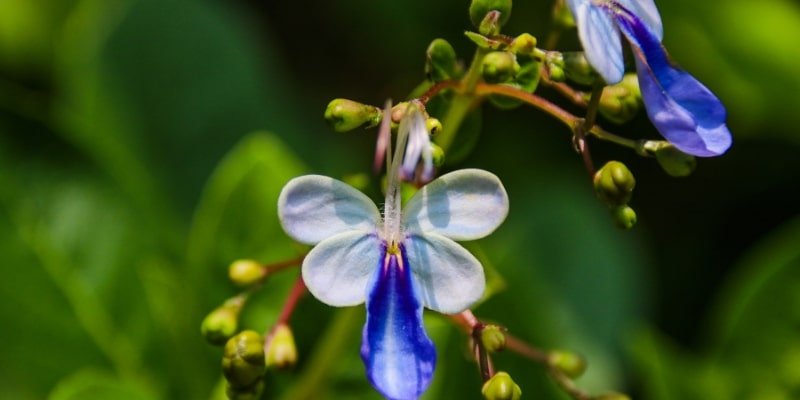
Botanical Name: Clerodendrum ugandense
Plant Type: Shrub
Hardiness Zones: 10-11 (USDA)
Sun Exposure: Full Sun to Partial Shade
Bright blue flower clusters with white centres are the hallmark of the Blue Glorybower. This year-round blooming plant is tropical in nature. It gives gardens a burst of brilliant colour and is a favourite with insects.
40. Blue Daisy (Felicia amelloides)

Botanical Name: Felicia amelloides
Plant Type: Perennial
Hardiness Zones: 8-11 (USDA)
Sun Exposure: Full Sun to Partial Shade
The yellow centre of a blue daisy is surrounded by brilliant blue petals. They draw butterflies and bees and can withstand droughts. They are a delightful addition to any rock garden.
41. Blue Columbine (Aquilegia coerulea)

Botanical Name: Aquilegia coerulea
Plant Type: Perennial
Hardiness Zones: 3-9 (USDA)
Sun Exposure: Partial Shade to Full Sun
The distinctive spurred petals of blue columbines make them a great choice for woodland gardening. They want soil that drains well and some shade. For extended blooming, deadhead spent blooms.
42. Blue Water Lily (Nymphaea caerulea)

Botanical Name: Nymphaea caerulea
Plant Type: Aquatic Perennial
Hardiness Zones: 9-11 (USDA)
Sun Exposure: Full Sun
The big, floating blue blossoms of blue water lilies have a pleasant scent. They look amazing in ponds and other water features, and they grow well in calm, sunny water.
43. Blue Throatwort (Trachelium caeruleum)
Botanical Name: Trachelium caeruleum
Plant Type: Perennial
Hardiness Zones: 5-9 (USDA)
Sun Exposure: Full Sun to Partial Shade
Tiny blue flowers in clusters atop robust stems are produced by blue throatwort. It keeps nicely in bouquets and is great for cutting. It likes damp, fertile soil.
44. Blue Woodruff (Asperula orientalis)
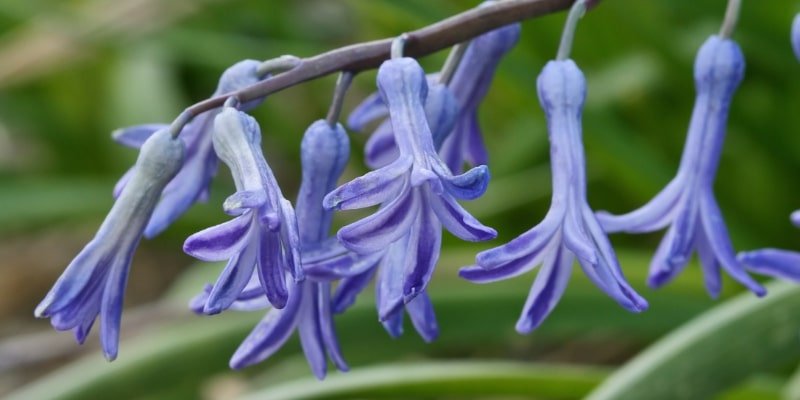
Botanical Name: Asperula orientalis
Plant Type: Perennial
Hardiness Zones: 5-9 (USDA)
Sun Exposure: Partial Shade
Blue woodruff creates a thick ground cover and small, fragrant blue blooms. It works best in regions with shade and well-drained soil. Herbal drinks frequently contain the blossoms.
45. Blue Thimble Flower (Gilia capitata)
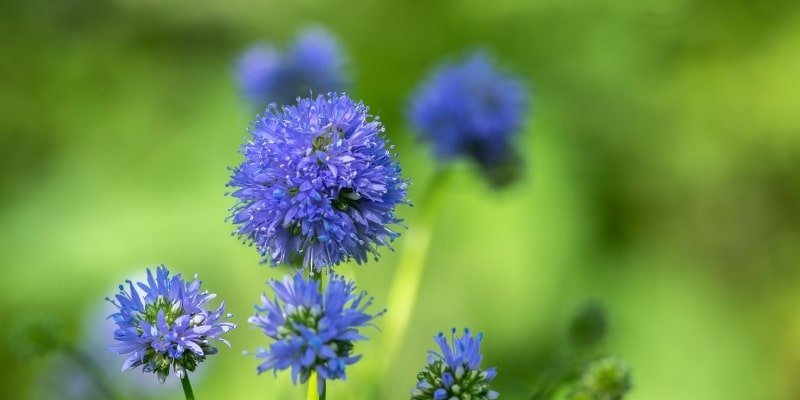
Botanical Name: Gilia capitata
Plant Type: Annual
Hardiness Zones: 3-9 (USDA)
Sun Exposure: Full Sun
The globe gilia, or blue thimble flower, bears spherical clusters of blue flowers that resemble thimbles. It does well in soil that drains well and can withstand drought. Ideal for gardens with wildflowers.
46. Morning Glory (Ipomoea purpurea)

Botanical Name: Ipomoea purpurea
Plant Type: Annual Vine
Hardiness Zones: 2-11 (USDA)
Sun Exposure: Full Sun
The vivid blue, funnel-shaped blossoms of morning glory vines are produced. They are ideal for trees because they are simple to grow and climb. In bright sunlight, they blossom abundantly.
47. Blue Thistle (Echinops ritro)
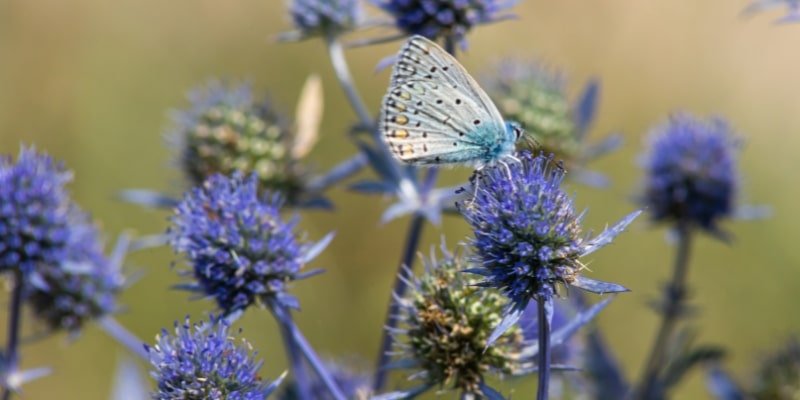
Botanical Name: Echinops ritro
Plant Type: Perennial
Hardiness Zones: 3-9 (USDA)
Sun Exposure: Full Sun
The steel-blue, spherical flowers of the blue thistle are encircled by bristly bracts. It’s a staple in arrangements of dried flowers and gives gardens a hint of untamed beauty.
48. Blue Flax Lily (Dianella tasmanica)
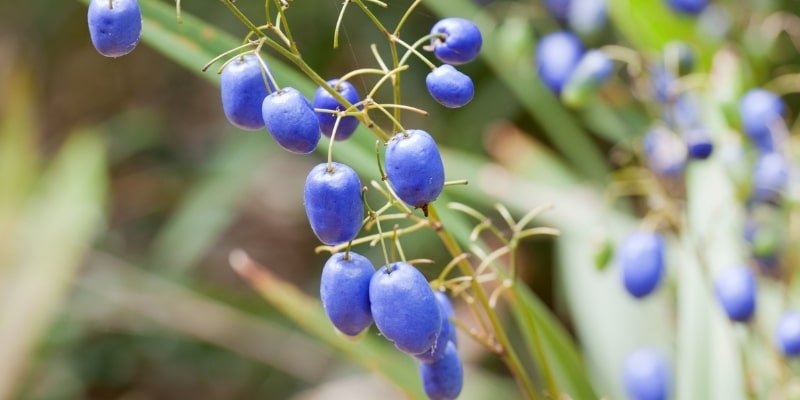
Botanical Name: Dianella tasmanica
Plant Type: Perennial
Hardiness Zones: 7-11 (USDA)
Sun Exposure: Full Sun to Partial Shade
The Blue Flax Lily has tiny blue flowers in the shape of stars and thin, blue-green foliage. This adaptable shrub is perfect for ground cover, borders, and large plantings.
49. Blue Porterweed (Stachytarpheta jamaicensis)

Botanical Name: Stachytarpheta jamaicensis
Plant Type: Perennial
Hardiness Zones: 9-11 (USDA)
Sun Exposure: Full Sun
Tiny blue flowers are arranged in groups on the thin spikes of blue porterweed. It gives gardens a tropical flair and attracts butterflies and bees. It requires little care and grows best in sunny weather.
50. Forget-Me-Nots (Myosotis)
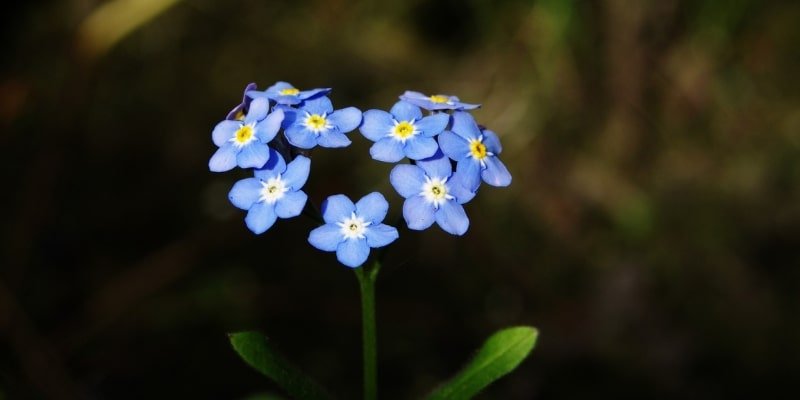
Botanical Name: Myosotis spp.
Plant Type: Annual or Perennial
Hardiness Zones: 3-9 (USDA)
Sun Exposure: Full Sun to Partial Shade
Forget-Me-Nots are little, yellow-cantered blooms with a sky-blue centre. They stand for faithfulness and genuine affection. These woodland plants are perfect for woodland gardens and shaded borders since they grow well in damp, shaded spots.
51. Blue Butterwort (Pinguicula caerulea)

Botanical Name: Pinguicula caerulea
Plant Type: Perennial Carnivorous Plant
Hardiness Zones: 8-11 (USDA)
Sun Exposure: Partial Sun to Full Sun
The lovely blue flowers of blue butterwort are paired with sticky leaf rosettes that serve as insect traps. It is a carnivorous plant that adds something special to bog gardens because it grows well in damp, acidic soil.
52. Balloon Flower (Platycodon grandiflorus)

Botanical Name: Platycodon grandiflorus
Plant Type: Perennial
Hardiness Zones: 3-9 (USDA)
Sun Exposure: Full Sun to Partial Shade
The name “Balloon Flowers” comes from its balloon-like buds that opened up to reveal blue blooms shaped like stars. They create wonderful-looking flowers and require little care.
53. Blue Fescue Grass (Festuca glauca)

Botanical Name: Festuca glauca
Plant Type: Ornamental Grass
Hardiness Zones: 4-8 (USDA)
Sun Exposure: Full Sun
Compact mounds of delicate, blue-grey leaves are formed by blue fescue grass. It is perfect for planting in containers, ground cover, and edging. To revitalize growth, trim back in the early spring.
54. Blue African Lily (Agapanthus africanus)

Botanical Name: Agapanthus africanus
Plant Type: Perennial
Hardiness Zones: 6-10 (USDA)
Sun Exposure: Full Sun to Partial Shade
Globe-shaped clusters of blue flowers with long, thin stalks are produced by blue African lilies. They grow well in garden beds or containers and are resistant to drought. Split apart clusters so they can spread.
55. Blue Evening Primrose (Oenothera speciosa)

Botanical Name: Oenothera speciosa
Plant Type: Perennial
Hardiness Zones: 5-10 (USDA)
Sun Exposure: Full Sun
In the Blue Evening the sky-blue flowers of the primrose unfold in the evening and have a saucer shape. It’s perfect for naturalizing wildflower gardens because it resists dryness and spreads easily.
56. Virginia Bluebells (Mertensia virginica)

Botanical Name: Mertensia virginica
Plant Type: Perennial
Hardiness Zones: 3-8
Sun Exposure: Full Shade to Partial Shade
Sky-blue, tubular flowers droop in clusters on Virginia bluebells. They like the wooded environment and blossom in the early spring. Their beautiful blue colour enhances the beauty of rural landscapes and shadow gardens.
57. Himalayan Blue Sheep (Pseudorchis albida)
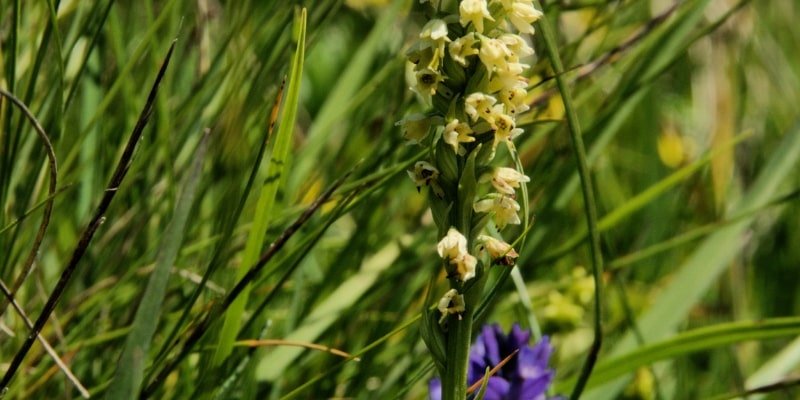
Botanical Name: Pseudorchis albida
Plant Type: Perennial
Hardiness Zones: 5-8 (USDA)
Sun Exposure: Partial Shade to Full Sun
The Himalayan Blue Sheep, sometimes called the Small White Orchid, has tiny blue blooms on thin stalks. It’s a pretty and uncommon species of orchid.
58. Blue Alkanet (Alkanna tinctoria)

Botanical Name: Alkanna tinctoria
Plant Type: Perennial
Hardiness Zones: 3-8 (USDA)
Sun Exposure: Full Sun to Partial Shade
The blossoms of Blue Alkanet are a deep blue funnel-shaped flower with hairy leaves. It has therapeutic qualities and is often used for natural colouring.
59. Blue Larkspur (Delphinium variegatum)
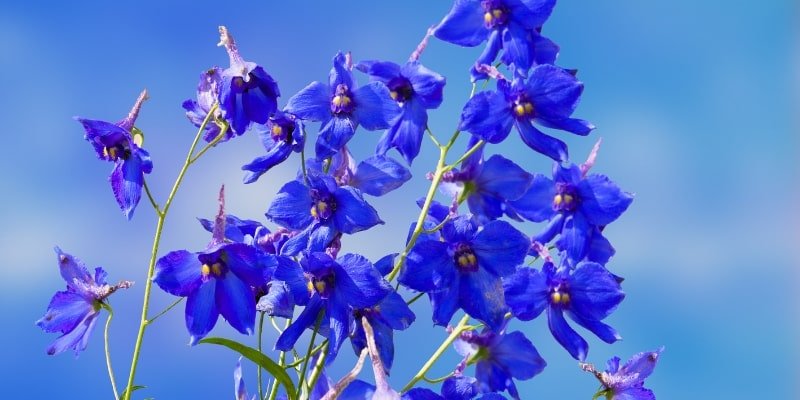
Botanical Name: Delphinium variegatum
Plant Type: Perennial
Hardiness Zones: 3-8 (USDA)
Sun Exposure: Full Sun
The long, blue blooms with white centre spikes of the Blue Larkspur. It’s a visually arresting shrub that adds vertical flair to cottage gardens.
60. Blue Chilean Crocus (Tecophilaea cyanocrocus)
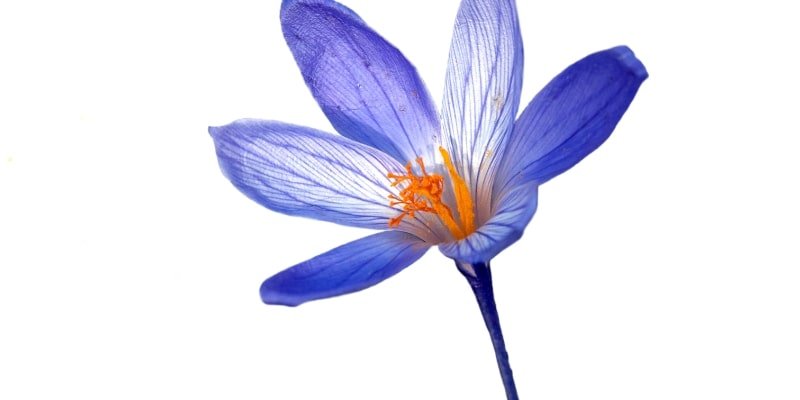
Botanical Name: Tecophilaea cyanocrocus
Plant Type: Perennial Bulb
Hardiness Zones: 5-8 (USDA)
Sun Exposure: Full Sun to Partial Shade
The Blue Chilean Crocus has beautiful blue flowers with a yellow eye in the centre. For enthusiasts, this bulb plant is extremely rare and valuable.
61. Blue Star Creeper (Isotoma fluviatilis)
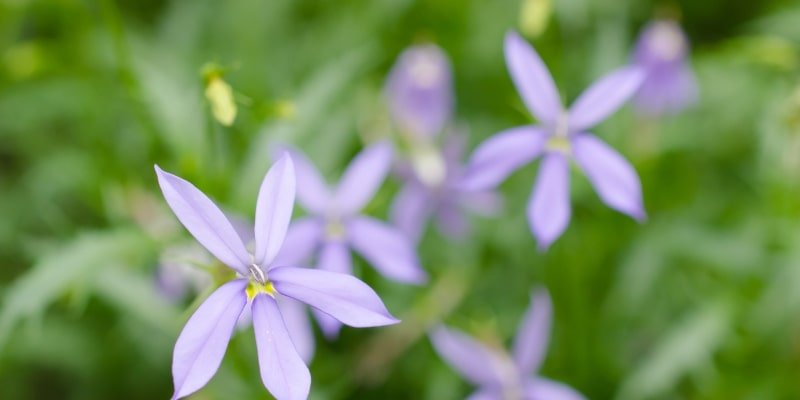
Botanical Name: Isotoma fluviatilis
Hardiness Zones: 5-9 (USDA)
Plant Type: Perennial
Sun Exposure: Full Sun to Partial Shade
The Blue Star Creeper has brilliant green foliage and small blue blooms in a dense mat. It works wonderfully to cover voids in walkways, in between stepping stones, and spilling over walls.
62. Blue Pea Vine (Clitoria ternatea)

Botanical Name: Clitoria ternatea
Plant Type: Vine
Hardiness Zones: 9-11 (USDA)
Sun Exposure: Full Sun to Partial Shade
The Blue Pea Vine is a beautiful plant with fern-like foliage and indigo-blue blooms. It is a component of traditional medicine and food preparation. To climb it, you’ll need assistance.
63. Blue Jacaranda (Jacaranda mimosifolia)
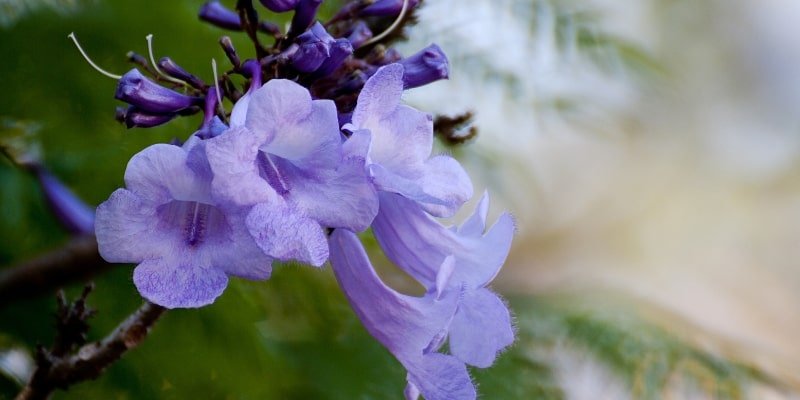
Botanical Name: Jacaranda mimosifolia
Plant Type: Tree
Hardiness Zones: 10-11 (USDA)
Sun Exposure: Full Sun
The breath-taking blue jacaranda tree features fern-like leaves and profusions of lavender-blue blossoms. It grows best in warm climates and gives landscapes a hint of the tropics.
64. Blue Sage or Mealy Cup Sage (Salvia farinacea)
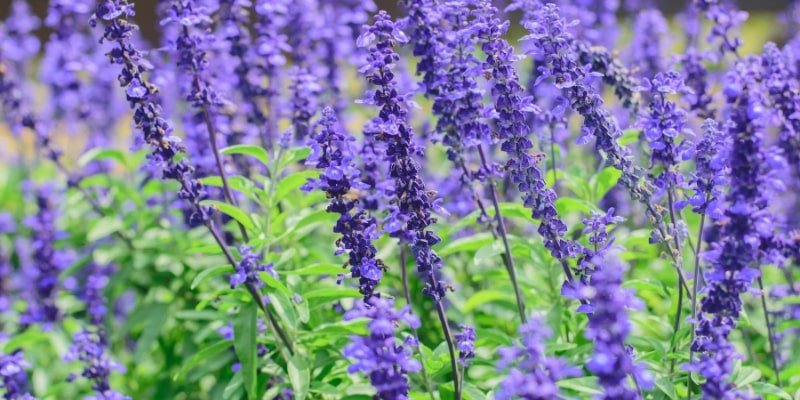
Botanical Name: Salvia farinacea
Plant Type: Perennial
Hardiness Zones: 8-10 (USDA)
Sun Exposure: Full Sun
Blue sage, also known as Mealy Cup sage, has upright stems bearing spike-like blue blooms. It is ideal for dry, sunny gardens and attracts bees and butterflies.
65. Blue Pimpernel (Anagallis monelli)
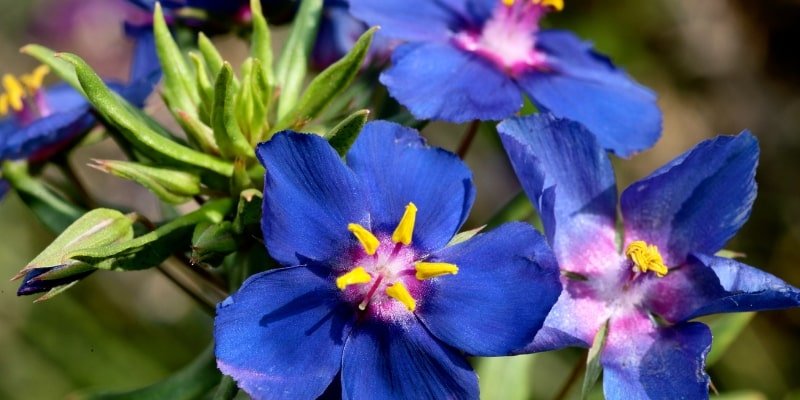
Botanical Name: Anagallis monelli
Plant Type: Perennial
Hardiness Zones: 7-11 (USDA)
Sun Exposure: Full Sun to Partial Shade
The exquisite sky-blue flowers with a golden centre are displayed by the Blue Pimpernel. It grows best in well-drained soil and blooms abundantly in the spring and summer. It is perfect for rock gardens and edging.
66. Blue Puya (Puya coerulea)
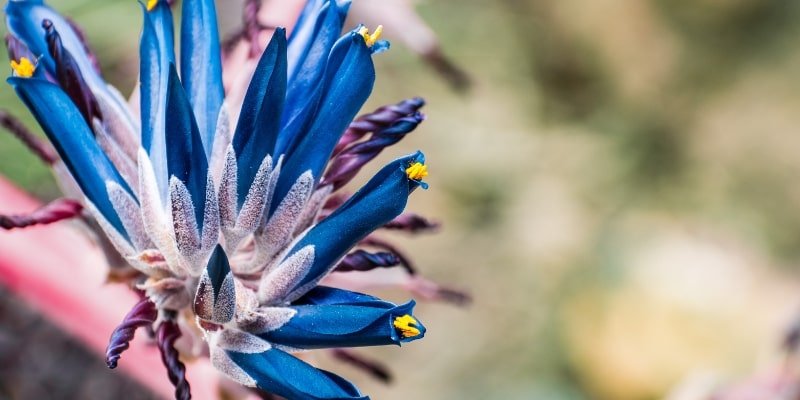
Botanical Name: Puya coerulea
Hardiness Zones: 8-11 (USDA)
Plant Type: Perennial
Sun Exposure: Full Sun to Partial Shade
The towering flower spikes of Blue Puya have brilliant blue blossoms and spiky blue-green leaves. It’s unusual and exotic, making it a great focal point for xeriscapes and desert gardens.
67. Perennial Geranium ‘Johnson’s Blue’ (Geranium spp)

Botanical Name: Geranium spp.
Plant Type: Perennial
Hardiness Zones: 4-8 (USDA)
Sun Exposure: Full Sun to Partial Shade
The vibrant blue, saucer-shaped flowers of the perennial geranium ‘Johnson’s Blue’ bloom above the foliage, which is deeply cut. It attracts butterflies with its abundance of blossoms in the spring and summer. Perfect for cottage gardens and borders.
68. Blue Thunbergia (Thunbergia grandiflora)

Botanical Name: Thunbergia grandiflora
Plant Type: Perennial Vine
Hardiness Zones: 9-11 (USDA)
Sun Exposure: Full Sun to Partial Shade
The huge, sky-blue flowers of the Blue Thunbergia, also known as Sky flower, contrast sharply with their yellow centers. This vine grows quickly and gives arbours, fences, and trellises a tropical flair.
69. Blue Pea Bush (Strobilanthes cusia)

Botanical Name: Strobilanthes cusia
Plant Type: Shrub
Hardiness Zones: 10-11 (USDA)
Sun Exposure: Full Sun to Partial Shade
Neela Kurinji, or Blue Pea Bush, displays spikes of indigo-blue flowers. This shrub, which is native to India, is uncommon and special since it only blooms once every 12 years and gives gardens an air of mystery.
70. Blue Hyssop (Hyssopus officinalis)

Botanical Name: Hyssopus officinalis
Plant Type: Perennial
Hardiness Zones: 3-9 (USDA)
Sun Exposure: Full Sun
Small, tubular blue flowers grow in spikes on the blue hyssop plant. This aromatic herb is frequently used in traditional medicine and food preparation.
71. Blue Lovegrass (Eragrostis spectabilis)

Botanical Name: Eragrostis spectabilis
Plant Type: Perennial Grass
Hardiness Zones: 5-9 (USDA)
Sun Exposure: Full Sun
Blue lovegrass produces delicate, airy blue flowerheads and tufts of blue-green leaves. It gives gardens more movement and is resistant to drought.
72. Blue Lily (Agapanthus orientalis)
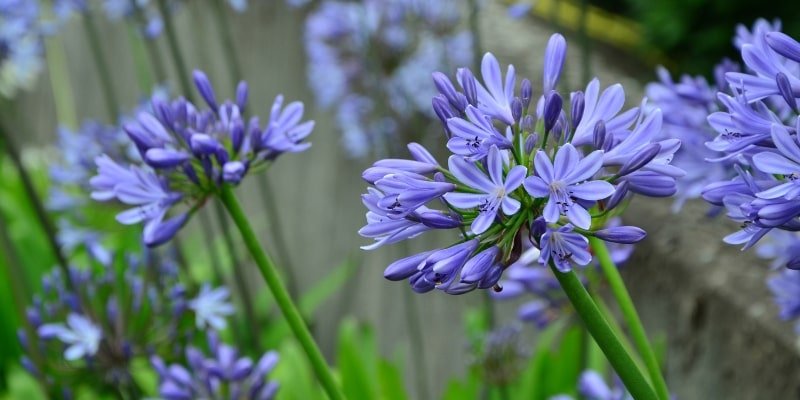
Botanical Name: Agapanthus orientalis
Plant Type: Perennial
Hardiness Zones: 7-11 (USDA)
Sun Exposure: Full Sun to Partial Shade
The tall stems of blue lilies display globular clusters of blue blossoms. They grow well in garden borders or pots and require little care. The soil should be well-drained for best growth.
73. Azure Aster (Aster azureus)
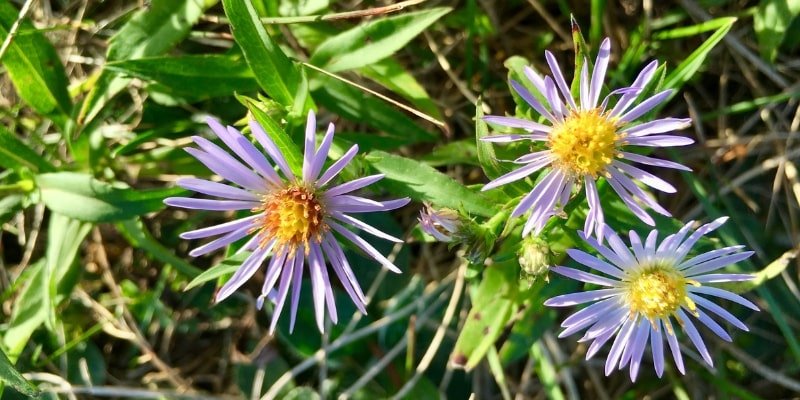
Botanical Name: Aster azureus
Plant Type: Perennial
Hardiness Zones: 3-8 (USDA)
Sun Exposure: Full Sun
The lavender-blue, daisy-like flowers of Aster azureus have yellow centers. It’s the late-season blooming that gives autumn gardens a pop of colour. Its nectar-rich blooms attract butterflies. From late July until the first frost of the year, these flowers will be in bloom.
74. Blue Hibiscus (Alyogyne huegelii)
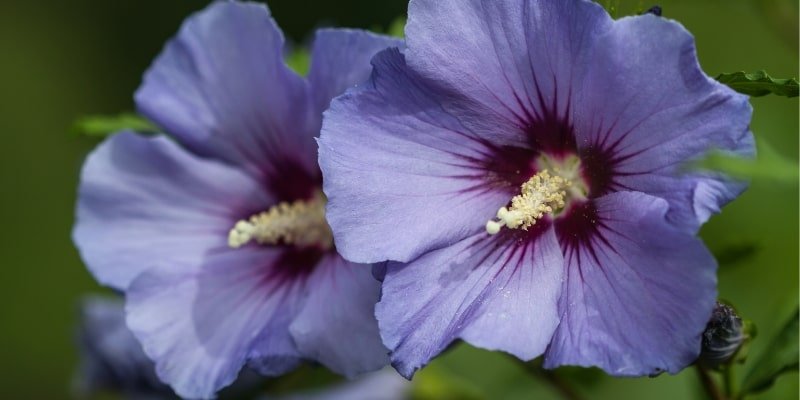
Botanical Name: Alyogyne huegelii
Plant Type: Shrub
Hardiness Zones: 9-11 (USDA)
Sun Exposure: Full Sun
The centre stamen of the big, blue-to-purple blossoms of the blue hibiscus is noticeable. Its bright, drought-tolerant foliage gives gardens a tropical feel that improves their aesthetic appeal.
75. Blue Rock Cress (Aubrieta deltoidea)
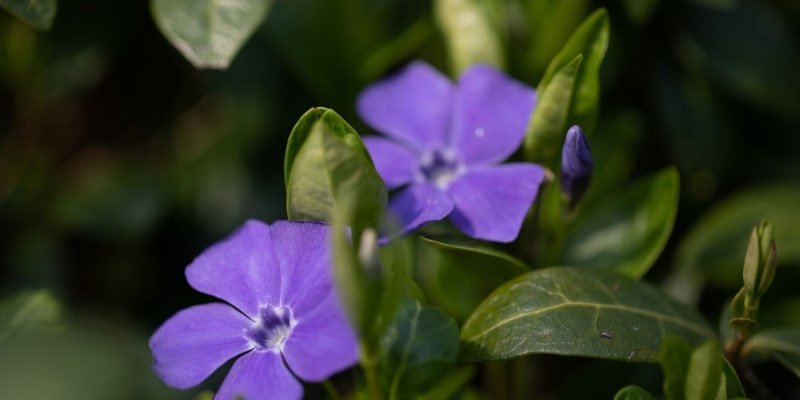
Botanical Name: Aubrieta deltoidea
Plant Type: Perennial
Hardiness Zones: 4-7 (USDA)
Sun Exposure: Full Sun
Falling gently over walls and rocks, blue rock cress creates a vibrant ground cover with bright blue flowers. It brings charm and vitality to rocky environments and alpine gardens alike.
76. Blue Fan Sage (Salvia patens)
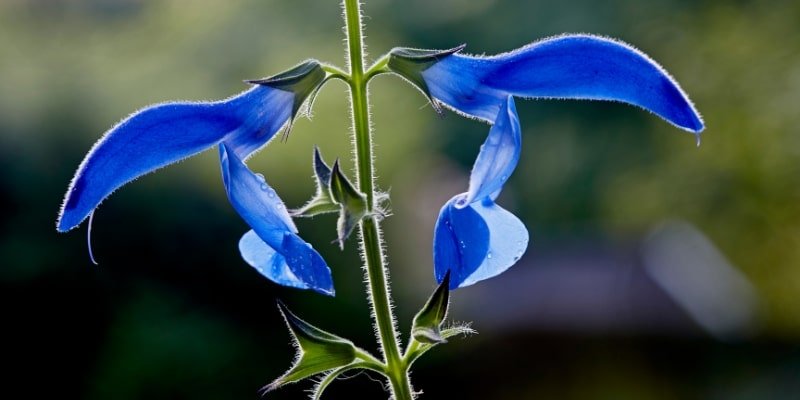
Botanical Name: Salvia patens
Plant Type: Perennial
Hardiness Zones: 8-11 (USDA)
Sun Exposure: Full Sun
The foliage of Blue Fan Sage is fragrant and features velvety, deep blue blooms. It draws bees and hummingbirds and can withstand droughts. After flowering, prune to promote bushy growth.
77. Blue Corydalis (Corydalis flexuosa)

Botanical Name: Corydalis flexuosa
Plant Type: Perennial
Hardiness Zones: 5-8 (USDA)
Sun Exposure: Full Sun to Partial Shade
Clusters of sky-blue, tubular flowers are produced by the blue corydalis. It likes partly shaded, damp, and chilly environments. It’s a fun accent to gardens with forests.
78. Blue-Eyed Grass (Sisyrinchium angustifolium)
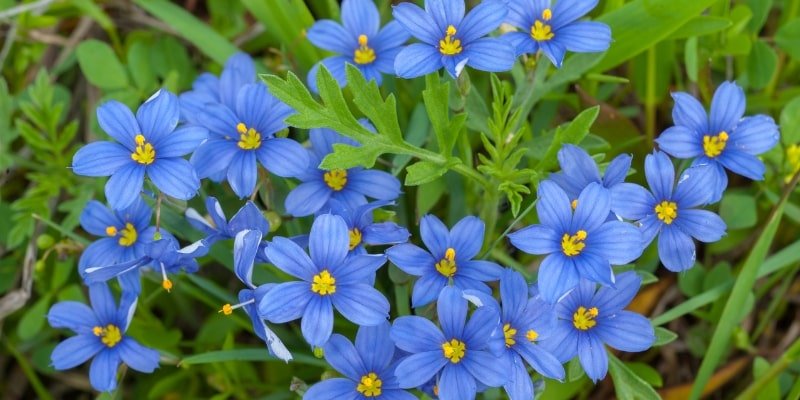
Botanical Name: Sisyrinchium angustifolium
Plant Type: Perennial
Hardiness Zones: 4-9 (USDA)
Sun Exposure: Full Sun to Partial Shade
Observing in Blue Grass features blue, star-shaped flowers and thin, iris-like leaves. Though it bears the name, it’s not really grass. It works great in gardens for naturalizing and edging.
79. Blue My Mind Evolvulus (Evolvulus glomeratus)
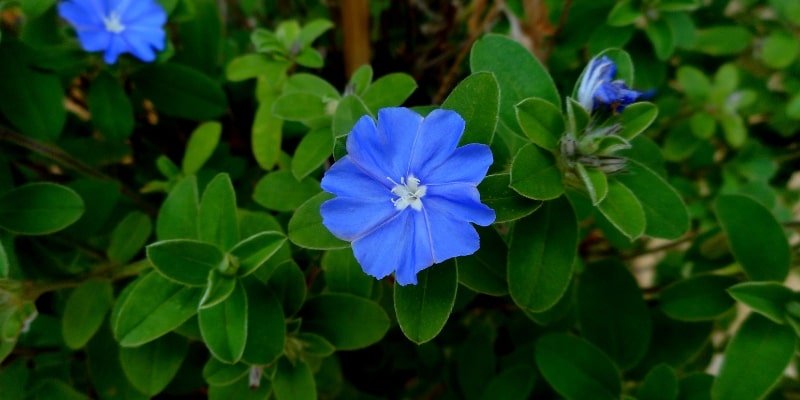
Botanical Name: Evolvulus glomeratus
Plant Type: Perennial
Hardiness Zones: 9-11 (USDA)
Sun Exposure: Full Sun
A low-growing plant with sky-blue flowers and silver-green foliage is the Blue My Mind Evolvulus. It creates a stunning blue carpet in sunny areas and can withstand high temperatures.
80. Blue Wild Indigo (Baptisia Australis)
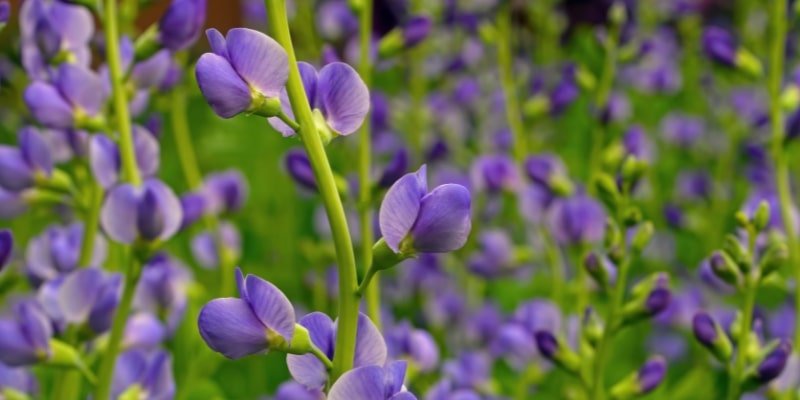
Botanical Name: Baptisia Australis
Plant Type: Perennial
Hardiness Zones: 3-9 (USDA)
Sun Exposure: Full Sun
Blue Wild Indigo, sometimes called Blue False Indigo, has blue-green foliage and tall spikes of blooms that look like blue peas. It gives gardens a distinctive architectural aspect and is drought-tolerant.
81. Gentian (Gentiana)

Botanical Name: Gentiana
Plant Type: Perennial
Hardiness Zones: 3-8 (USDA)
Sun Exposure: Full Sun to Partial Shade
The trumpet-shaped, deep blue gentian blossoms. Their ideal soil is damp but well-drained. Gentians’ bitter roots make them a popular ingredient in herbal therapy.
82. Blue Bamboo (Dendrocalamus strictus)
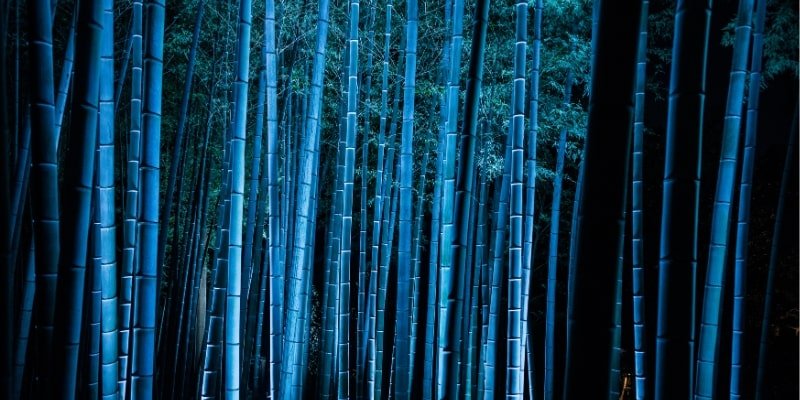
Botanical Name: Dendrocalamus strictus
Plant Type: Clumping Bamboo
Hardiness Zones: 8-11 (USDA)
Sun Exposure: Full Sun to Partial Shade
The foliage of Blue Bamboo is luscious green with powdered blue culms. This bamboo type grows quickly and gives gardens and landscapes a sense of refinement and seclusion.
83. Blue Lupine (Lupinus angustifolius)

Botanical Name: Lupinus perennis
Plant Type: Herbaceous perennial
Hardiness Zones: 3-8 (USDA)
Sun Exposure: Full sun
The blue lupine is an excellent option if you want to include blue flowers that are tall.
84. Blue Tickseed (Coreopsis)
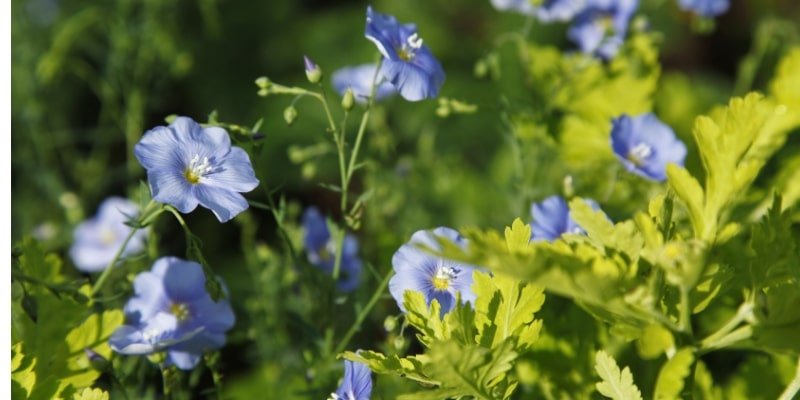
Botanical Name: Coreopsis
Plant Type: Annuals, Perennials
Hardiness Zones: 4-9 (USDA)
Sun Exposure: Full Sun
A distinctive blue flower with a resilient nature is the blue tickseed. It creates beautiful garden borders and looks excellent in containers.
85. Blue Statice (Limonium sinuatum)
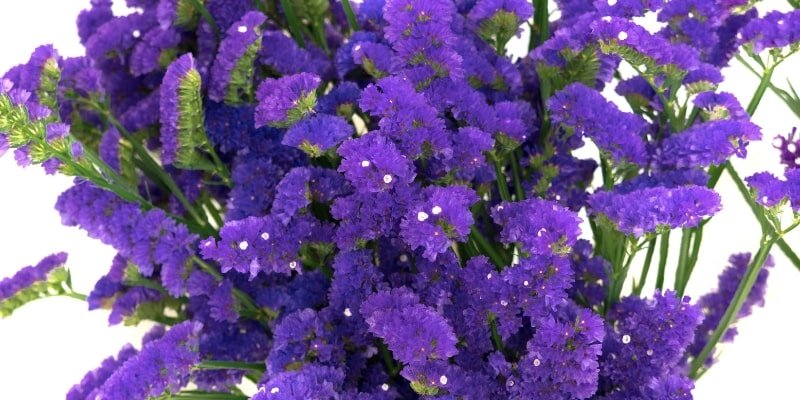
Botanical Name: Limonium sinuatum
Plant Type: Herbaceous perennial
Hardiness Zones: 8-11 (USDA)
Sun Exposure: Full Sun
An annual plant called Blue Statice bears long, slender stem clusters of tiny, papery blue blooms.
86. Blue Foxglove (Digitalis purpurea)
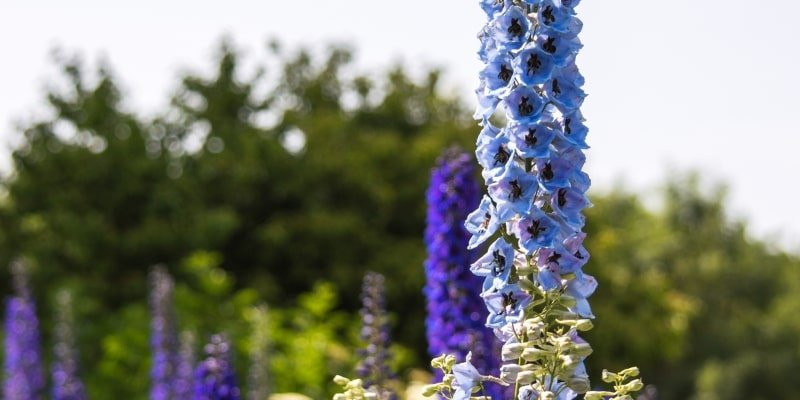
Botanical Name: Digitalis purpurea
Plant Type: Perennials
Hardiness Zones: 4-9 (USDA)
Sun Exposure: Full sun to light shade
With their ability to self-seed, foxgloves produce a breath-taking display of blue flowers every year.
87. Blue Creeping Phlox (Phlox stolonifera)
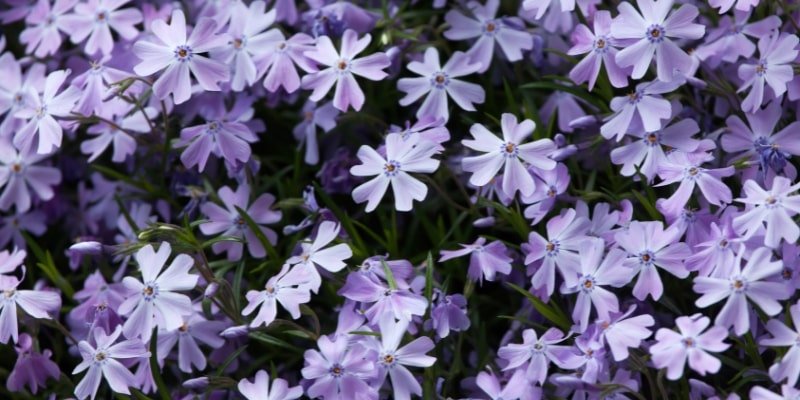
Botanical Name: Phlox subulata
Plant Type: Perennials
Hardiness Zones: 3-9 (USDA)
Sun Exposure: Full Sun
One excellent method for creating a beautiful ground cover is to plant blue creeping phlox. These gracefully tumble over walls and boulders.
88. Blue Water Hyacinth (Eichhornia crassipes)
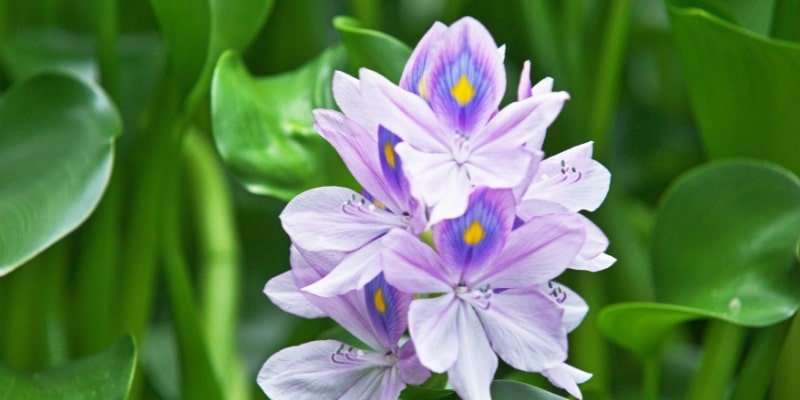
Botanical Name: E. crassipes
Plant Type: Perennials
Hardiness Zones: 8-11 (USDA)
Sun Exposure: Full or partial sunshine
Beautiful blue-purple blossoms of the aquatic plant Blue Water Hyacinth float on the water’s surface. Nothing compares to these flowers’ beauty.
89. Catmint (Nepeta nervosa)

Botanical Name: Nepeta cataria
Plant Type: Perennial
Hardiness Zones: 3-9 (USDA)
Sun Exposure: Full Sun
Long-lasting blossoms and beautiful foliage characterize catmints. They have a long lifespan and a lovely appearance.
90. Clematis (Clematis)
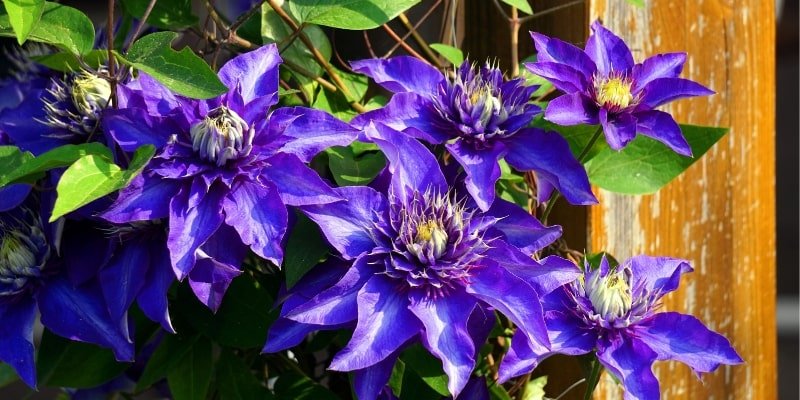
Botanical Name: Clematis x jackmanii
Plant Type: Perennial
Hardiness Zones: 3-9 (USDA)
Sun Exposure: Full Sun
Big, eye-catching flowers in a variety of hues, such as pink, purple, blue, white, and red, are produced by clematis.
91. French Lavender (Lavandula stoechas)

Botanical Name: Lavandula angustifolia
Plant Type: Perennial
Hardiness Zones: 5-9 (USDA)
Sun Exposure: Direct Sunlight
Oxford blue’s beauty and scent can last for years in your garden with the right maintenance.
92. Russian Sage (Perovskia atriplicifolia)

Botanical Name: Perovskia atriplicifolia
Plant Type: Perennial Shrub
Hardiness Zones: 4-9 (USDA)
Sun Exposure: Full Sun
The leaves of Russian sage are aromatic and silvery-grey. However, its towering spikes of lavender-blue flowers are the main attraction.
93. Summer Snapdragon (Angelonia)
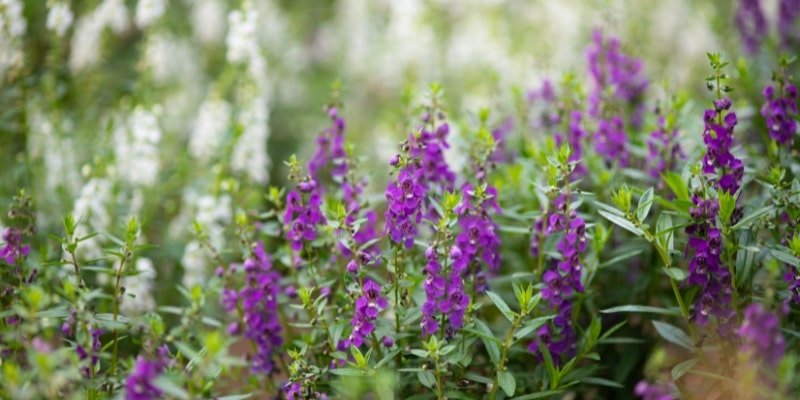
Botanical Name: Angelonia
Plant Type: Annuals, Perennials
Hardiness Zones: 9-11 (UDSA)
Sun Exposure: Direct Sunlight
You could try growing summer snapdragon if you live in a sunny area. It will certainly flourish because it enjoys the heat.
94. Veronica Georgia Blue (Veronica peduncularis)

Botanical Name: Veronica peduncularis
Plant Type: Perennials
Hardiness Zones: 4-6 (USDA)
Sun Exposure: Full Sun
One particular type of Veronica is called “Veronica Georgia Blue,” and it is a low-growing, spreading groundcover with tiny, dark blue blooms.
95. Pansy (Viola odorata)

Botanical Name: Viola tricolor var. hortensis
Plant Type: Shrub
Hardiness Zones: 2-11 (USDA)
Sun Exposure: Full Sun
Violina pansies are excellent choices for hanging baskets, containers, and garden borders. They are stunning with their bright centres and black petals.
96. Blue Dwarf Iris (Iris cristata)
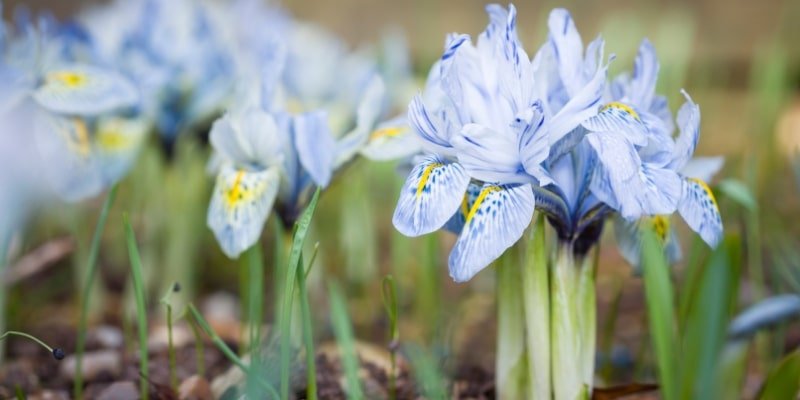
Botanical Name: Iris reticulata
Plant Type: Perennial
Hardiness Zones: 5-8 (USDA)
Sun Exposure: Full Sun
A remarkable spring bulb, the little blue dwarf iris yields beautiful blue-purple flowers with yellow highlights.
97. Blue Sky Vine (Thunbergia grandiflora)
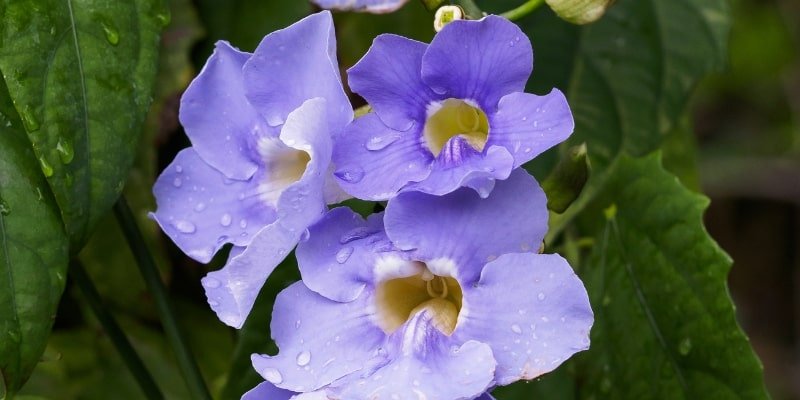
Botanical Name: Thunbergia grandiflora
Plant Type: Perennial
Hardiness Zones: 9-11 (USDA)
Sun Exposure: Full Sun
The breath-taking sky-blue flowers with black centres produced by the lovely and quickly spreading blue sky vine can be a wonderful addition to your lawns.
98. Blue Fringed Sage (Artemisia frigida Willd)

Botanical Name: Salvia azurea
Plant Type: Shrub
Hardiness Zones: 5-9 (USDA)
Sun Exposure: Full Sun
A lovely and low-maintenance plant that may give your garden or landscape some colour and texture is blue-fringed sage.
99. Blue Daze (Evolvulus nuttallianus)

Botanical Name: Evolvulus
Plant Type: Well Rooted Plant
Hardiness Zones: 8-11 (USDA)
Sun Exposure: Full Sun (Tolerate Some Shade)
You must plant blue dazes in your garden if you want to enjoy blue blossoms all summer.
100. Blue Mist Shrub (Caryopteris)
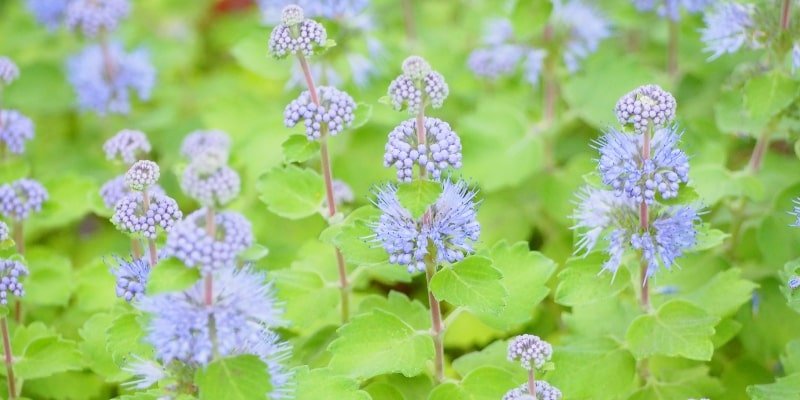
Botanical Name: Caryopteris
Plant Type: Shrub
Hardiness Zones: 5-9
Sun Exposure: Full Sun
Soft blue flowers bloom in late summer and early autumn on the deciduous Blue Mist Shrub.
101. Beth’s Blue (Isotoma axillaries)

Botanical Name: Isotoma axillaries
Plant Type: Perennial
Hardiness Zones: 8-10
Sun Exposure: Full Sun (+6 hrs.)
Beth’s blue looks fantastic in any landscape or garden. It draws pollinators like butterflies and bees and adds brilliant colour.
Conclusion
We hope you have gained more knowledge about these amazing plants after reading our post on our favourite blue flowers. It’s true that blue is a majestic, lovely colour that will infuse your landscape with vitality and happiness. Why not bring some of these amazing flowers into your home and see for yourself just how amazing they are now that you know the fundamentals of caring for many of them?

